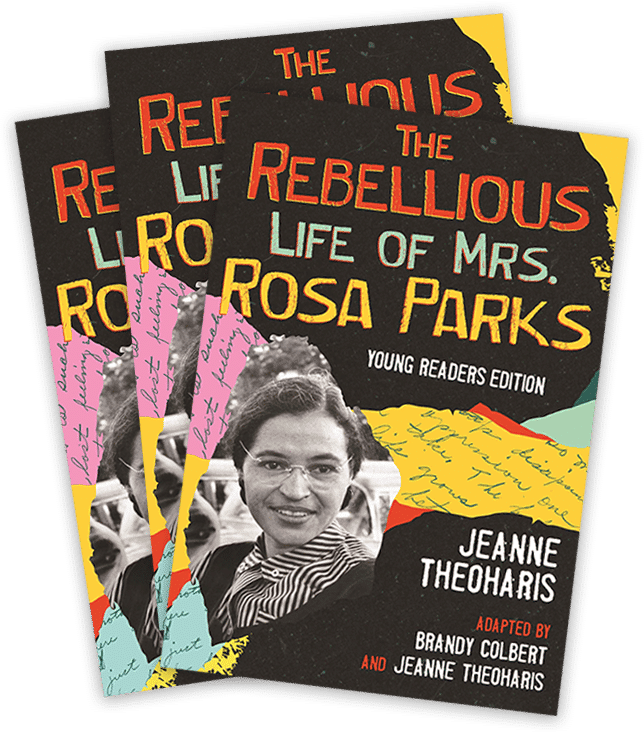 Thousands of students are reading the young readers’ edition of The Rebellious Life of Mrs. Rosa Parks and watching the new documentary film of the same name.
Thousands of students are reading the young readers’ edition of The Rebellious Life of Mrs. Rosa Parks and watching the new documentary film of the same name.
Not only do young people find Parks’ story gripping, they are introduced to history that is missing from textbooks about the Civil Rights and Black Power Movements. The book and film also give students a chance to reflect on their own role in shaping a more just society today.
Here is a map of the locations where teachers have received sets of the book so far. The red pins indicate states where anti-history education (“anti-CRT”) legislation has passed and the yellow pins represent states where legislation has been proposed or is moving through state legislature.
Identity and Resistance
Abby MacPhail, a high school teacher at the United Nations International School in New York City, shares a powerful story about her students’ study of Rosa Parks through the lens of identity and resistance.
I used The Rebellious Life of Ms. Rosa Parks with my grade 9 students in New York City as part of our unit on “Identity and Resistance.” By learning about the life of Rosa Parks and about the Civil Rights Movement, my students were able to develop a deeper understanding of how groups of oppressed peoples have demanded their rights in the U.S. and of what factors enable resistance movements to cause change (two of our unit’s essential questions).
We began our unit with an introduction to the work of Dr. Erica Chenoweth and the four factors making nonviolent civil resistance more likely to succeed: mobilizing a wide and diverse population, using a diversity of tactics, shifting loyalties from the government/regime’s pillars of support and remaining nonviolent and maintaining discipline and resilience in the face of state repression. Then, as we studied the Civil Rights Movement and read The Rebellious Life of Rosa Parks, we kept coming back to these four factors as we looked for evidence of them, and ultimately discussed and debated the extent to which the Civil Rights movement had been successful.
Beyond reading The Rebellious Life of Rosa Parks, we journaled and debriefed our responses in small groups, engaged in the Zinn Education Project’s mixer activity, and watched some Democracy Now! clips of interviews with the book’s author Jeanne Theoharis. Continue reading and see video.
Writing Letters to Mrs. Rosa Parks
In a Donna Sturycz’s class at Greenfield Bilingual School in Milwaukee, students watched the Rosa Parks documentary in six 15-20 minute segments over a few weeks. A smaller group also read the book.
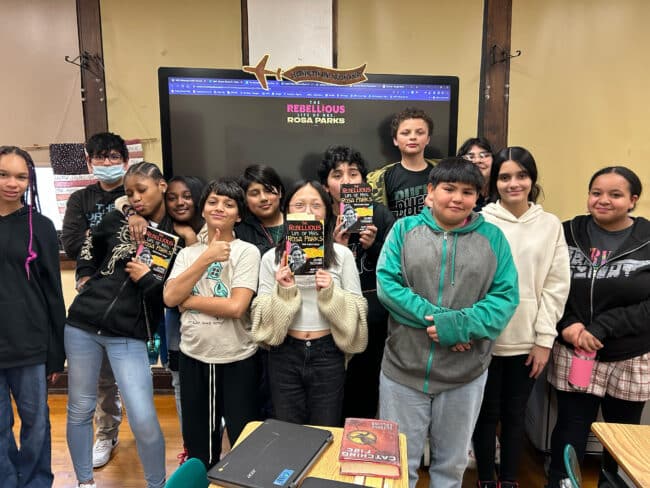
Donna explained, “Then they wrote letters, as if they were writing to Rosa Parks, to demonstrate their comprehension of her life and share with their families there was more to her than just giving up her seat on the bus.” Below is one of the letters. It was signed, “Your new friend.”
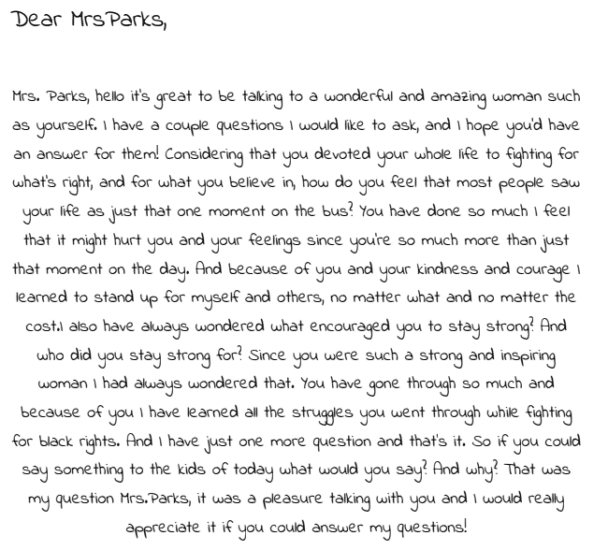
Donna noted, “Thank you for the opportunity to provide the biography of Rosa Parks via book and film to my students. They applauded when the film came to an end and were chattering on about it for some time that day.”
African American/Black & Puerto Rican/Latino Studies
I teach Connecticut‘s newly mandated African American/Black & Puerto Rican/Latino Studies elective at Newtown High School. I began by teaching a mini-lesson on the differences between a master narrative and counter-narrative and used the model I learned from the Teaching Hard History Cohort I’ve been in this past semester. I then assigned each student to read two chapters, the introduction and conclusion, and gave them post-it notes to annotate as they read.
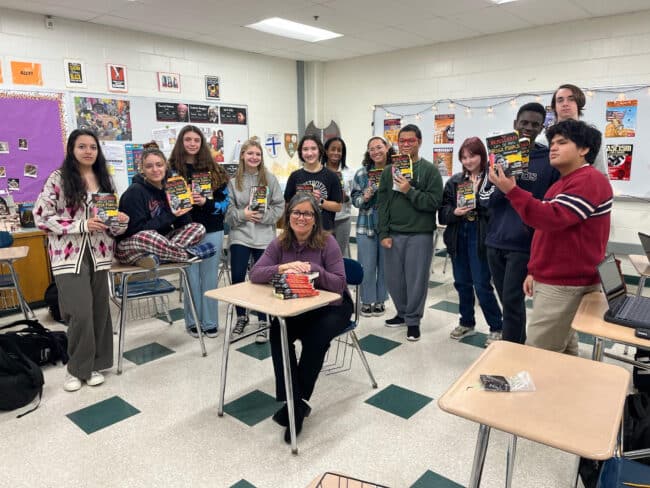 They identified examples of counter-narratives to the master narrative that Rosa Parks was a quiet, docile person who’s only contribution to the Civil Rights Movement was to sit down in the white section of the bus.
They identified examples of counter-narratives to the master narrative that Rosa Parks was a quiet, docile person who’s only contribution to the Civil Rights Movement was to sit down in the white section of the bus.
Afterwards, we had a class discussion in which students shared their examples and the impact their new findings had on their learning. Students made connections to each other’s examples and had many “wow” experiences throughout the discussion. Finally, they provided examples of “rebellious” moments in Mrs. Rosa Parks’ life they admired. It was a great lesson! — Rachel Torres, High School Teacher
Seeding Disruption
Students in Seeding Disruption Remix, an organizing fellowship for racial justice in Washington, D.C., received the young readers edition of The Rebellious Life of Mrs. Rosa Parks.
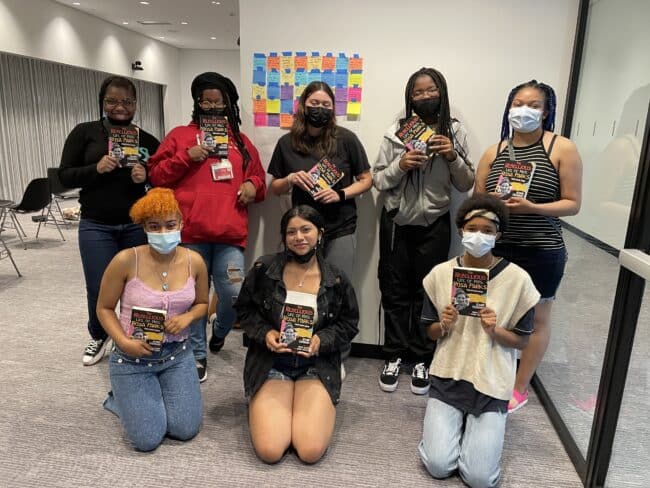
The Rebellious Life of Mrs. Rosa Parks inspired me because, in an early chapter, she got pushed off the sidewalk by a white boy and she stood up for herself. It may seem small, but she was an activist as a young girl and she wouldn’t let people belittle her. This book puts no limit on age to be an activist and stand up for ourselves. — Arianna Camacho-Mendez, 12th Grade Student
Hidden Women of the Montgomery Bus Boycott
In my Baltimore classroom, I used the book and film to deepen my students’ understanding of Mrs. Parks herself and how her life story was wrapped up in the larger Black freedom struggle in the twentieth century.
One of the most important things I try to get across to my scholars is that the Civil Rights Movement didn’t “start” with Mrs. Parks, and that her life of activism was part of a much longer and broader organizing effort both before and after World War II. I loved how the film incorporated that narrative by highlighting how Black soldiers returning from both World Wars were instrumental in pushing for an end to segregation at home. I also liked how it highlighted Mrs. Parks’ activism on the Scottsboro Boys case and her support for Black freedom movements later in her life — so she was part of this movement her entire life.
Also, I used a lesson from the Anti-racist APUSH curriculum on the “Hidden Women of the Montgomery Bus Boycott” to complement the book/film. This broadened students’ understanding of how the movement succeeded due to the efforts not just of Mrs. Parks, but of so many unsung Black women like Jo Ann Robinson, Mary Fair Burks, Claudette Colvin, etc. I wanted students to understand that Mrs. Parks was a key leader in the local NAACP and that her organizing and activism with these other women was crucial to the success of the boycott. — Seth Billingsley, High School Teacher
How Will I Change the World
I used the books to engage my Baltimore 6th Grade Honors students with the essential question: How will I change the world?
Students were tasked with using all of the knowledge they had built to read the story of Rosa Parks and understand the various social hierarchies at play; define and refine their definitions of a change agent and how Rosa met that definition; and ultimately think through how images changed our perception of events.
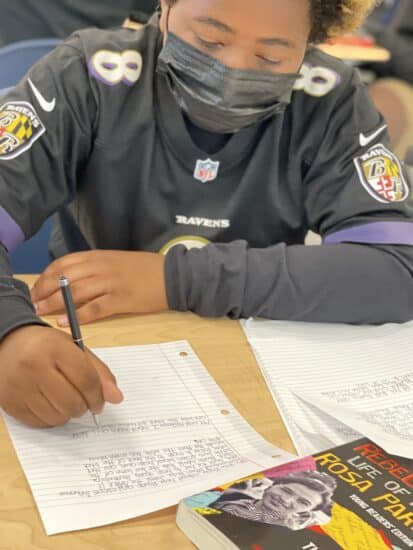 |
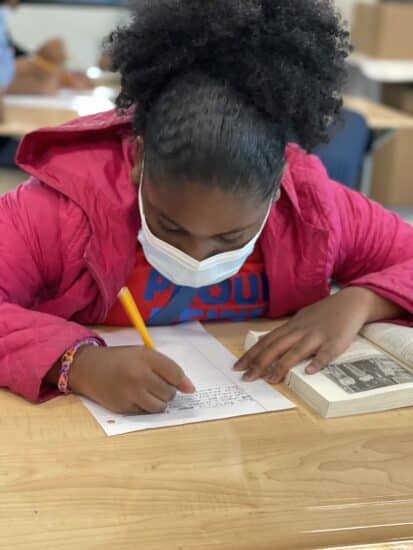 |
In all, this was the perfect culminating text to get students to think how a young Rosa, much like themselves, had a passion because she saw an injustice and wanted to change something in her world. The goal was for students to read her story of change and create their own. — Kyair Butts, Middle School Language Arts Teacher
Talked about equitable grading practices today at @hhps_eagles PD! Excited & encouraged that was put to practice as students in 601 supported each other w/ strengths & growth areas w/ recently written essays care of @ZinnEdProject pic.twitter.com/wdvZvZnumg
— Kyair (@kyairb) May 4, 2022
School and Family Film Screening
Joyce McCree, the Newark Teaching for Black Lives study group’s coordinator, organized a watch party for the AFT hosted virtual screening of The Rebellious Life of Mrs. Rosa Parks. McCree reported:
This viewing was an energizing experience for our group. It was a time to show the power of this Teaching for Black Lives experience on a more global scope. Such a powerful story and powerful person. Added bonus, it was International Women’s Day — so empowering.
Study group members shared some of their reflections:
I found the movie inspiring and jam packed with knowledge. It allowed me to see how history is distorted. It opened my eyes to the true “sheroes” that have helped to shape our society.
Rosa Parks has done so much in fighting injustice that she does not receive enough credit for. It is sad that most of her doings were credited to someone else and being the humble person she was, she never allowed these things to stop her mission.
Rosa Parks was fearless and such a natural leader and ally to social justice issues. She did not hesitate to walk into harm’s way on behalf of herself or others. She used her power to lead.
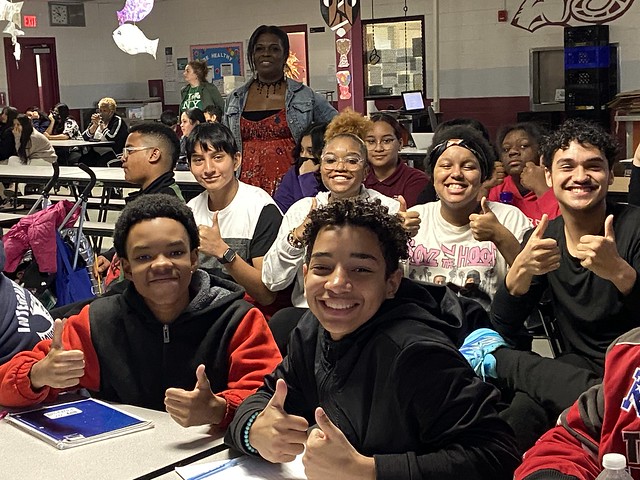
While watching the film, the study group members stayed connected via group chat and started making plans for a student based forum “to unpack the power of Rosa Parks,” in celebration of Women’s History Month. Continue reading.
New Road Map for Rosa Parks
This week I used the movie The Rebellious Life of Mrs. Rosa Parks and one of the lessons from the teaching guide with my seventh and eighth graders.
Every year, my school pays particular attention to Martin Luther King Jr. Day. We are a small, rural, private, pre-K through eighth-grade school in Afton, Virginia. Read Katrien’s full story here. — Katrien Vance, Middle School History Teacher
More Stories by State
Alabama
Birmingham
My students truly enjoyed The Rebellious Life of Mrs. Rosa Parks book and documentary.
As a result of their study of both resources, my students were able to produce informative essays that highlight the unknown story of Rosa Parks. This helped them prepare for the Alabama Comprehensive Assessment Program. — Dorine James, Elementary Social Studies Teacher
Arizona
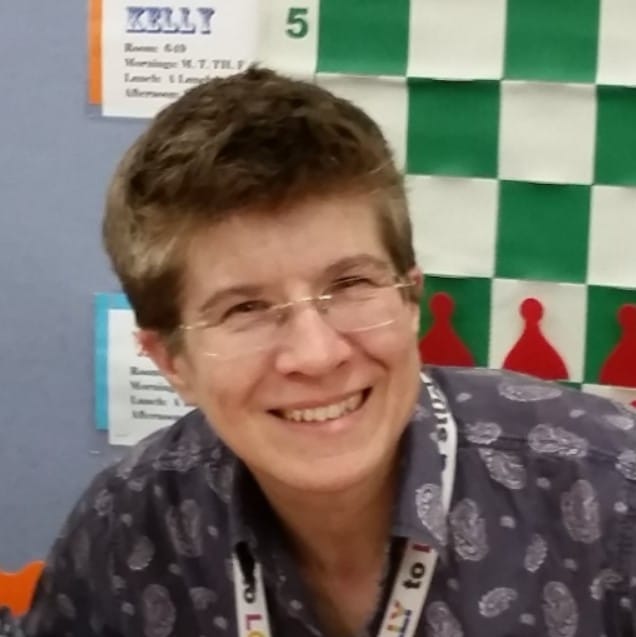
I introduced book clubs this year, where students had a list of books to choose from. I created groups of no more than four students, and the students read and the book together and regularly met to discuss it. I used the young readers edition of The Rebellious Life of Rosa Parks as an option in my class book club this year and had several students who chose, on their own, to read this book. The students came away with not only new knowledge but a “wow” moment when they realized all they did not know.
Most of the student’s book club options were fictional novels, but there was still interest in this book, this account of Rosa Parks’ life. The students realized this person was not just a woman who sat on a bus, but a woman who had a life filled with many moments of inspiration.
Having this book available for my students to read and check out on their own was great. I would not have had that option without the generosity of the Zinn Education Project.
California
Los Angeles
We looked as a class and individually at the Library of Congress timeline of Rosa’s life. Then we watched the video and students took individual notes about key events in her life. After the movie, in groups or individually they compiled what they thought were the most important events and created their own rich and detailed timelines.
— Daniel Lockman, Middle School Social Studies Teacher
San Diego
Huge s/o and thank you to the folks @ZinnEdProject for gifting my students a class set of this incredible book about the *real* Mrs. Rosa Parks! We are engaged in learning about her rebellious spirit, and destroying the myths that reduce her activism to a single stance on a bus. pic.twitter.com/xSwzZ2SkKQ
— Don Dumas (@don_dumas) April 20, 2022
San Ramon
We learned about The Rebellious Life of Mrs. Rosa Parks in our school’s Teaching for Black Lives study group. We offered the Rosa Parks book to students as an optional reading for our social issues book club.
Students responded positively. They were able to connect the content to current social issues, promoting meaningful discussions and critical thinking.
Furthermore, the students who read The Rebellious Life of Mrs. Rosa Parks demonstrated increased empathy and understanding of the struggles faced by African Americans during the Civil Rights Movement. They were able to connect with the experiences and emotions portrayed in the book, which led to thoughtful and insightful conversations within the classroom.
Overall, including these resources in our curriculum has led to a more inclusive and informed learning environment. The students have become more engaged and empathetic, and the teachers in our study group are better equipped to address social issues and integrate diverse perspectives in their instruction. — Anonymous
Connecticut
Hartford
I used the movie in my African American/Black and Latino/Puerto Rican studies course. We had been discussing the concept of a single story and the Civil Rights Movement in America. Students had been introduced to several male figures in the Civil Rights Movement and we used this video to start the discussion on women in the movement.
Students completed the master narrative lesson plan from Zinn Education Project before we watched the film. We discussed the differences between what they had been taught about Rosa Parks and what they learned as a result of the movie. We then created a timeline of events that I could use in my U.S. History courses to teach about Rosa Parks. — Lorri Weimer, High School Social Studies Teacher
District of Columbia
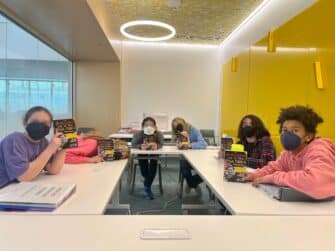
My students read The Rebellious Life of Mrs. Rosa Parks for their African American Studies class. While reading, they were tasked with paying attention to some specific things, such as the different kinds of civil rights work Rosa Parks did, how the book challenges the standard narrative that most people know about Mrs. Parks, significant events events in the book, some of the other important people mentioned in the book, and the obstacles Parks faced.
They also watched a clips from the documentary based on the book, followed by a discussion. Much of what my students wanted to talk about was the way the narrative of Parks being too tired to stand up obscures her life and work; they also wanted to talk about the sexism she faced. They like the description of her as quiet steel.— Stacey Cohen, Middle School Social Studies Teacher
Florida
Hollywood
The students created a Venn diagram to assess their beliefs about Rosa Parks before and after reading text selections.
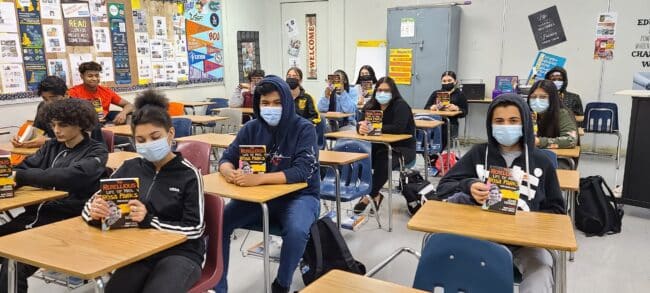
We look forward to running full literature circles in the new school year. — Sara Pierce, High School Administrator
Orlando
I conducted workshops for the faculty and we viewed the documentary together. They appreciated learning about Mrs. Parks’ influence beyond the version of refusing to give up her seat. I created a worksheet for them to complete and it also allowed them to give feedback. They were taken with how much of an activist she was and how young she was, as opposed to how she’s portrayed. Learning her history and the significance of how that shapes someone brought her to life even more. — Marsha Hall, Middle School Social Studies Teacher
Palm Bay
We cannot use the copies you sent of The Rebellious Life of Mrs. Rosa Parks in our school due to the incredibly vague and abusive nature of the state law known as the “Stop W.O.K.E. Act.” Further, as it is not on the approved list, I cannot have it in my classroom.
The town where I teach has 150,000 people and not a single bookstore. There is no decent public transportation for people to get to a library. Banning books from schools denies young people access to them. That is why I helped start Foundation 451. We collect and give away banned and challenged books (including The Rebellious Life) to students and families at festivals, churches, stores, and more.
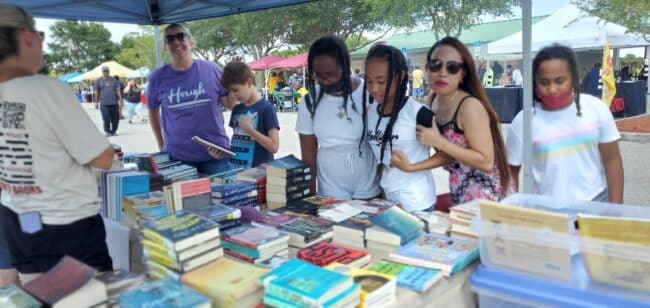
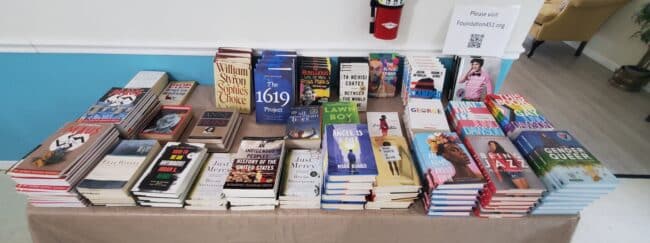
The Rebellious Life of Mrs. Rosa Parks was especially popular at the Juneteenth book giveaways, as well as the giveaways at churches. Students are delighted to have this book among their options. We discussed the book with parents at every book giveaway. — Adam Tritt, High School Language Arts Teacher; Foundation 451 Founder/Volunteer
Georgia
Kennesaw
In March 2023, #BlackTeachersMatter and members of the Teaching for Black Lives study group at Kennesaw State University hosted a “Rosa Parks: Activist, Advocate, Advisor” two-day event for undergraduate students and alumni that included a film screening of The Rebellious Life of Mrs. Rosa Parks and interactive curriculum workshops inspired by the Zinn Education Project’s Rosa Parks teaching guide. Read the full story here. — Marrielle Myers, University Teacher Educator
Hawaii
Kahului
I showed the film to my students over the period of two days. They took notes on people and events they did not already know about. The purpose was to add context to the story of Rosa Parks. — Anthony Benigno, High School Social Studies Teacher
Illinois
Chicago
The students watched the documentary over a period of a few days. They filled out a teacher-created viewing guide and focused on identifying master narratives and counter-narratives. — Cynthia Krueger, Elementary Social Studies Teacher
We watched the film during our unit on Reconstruction. Before we watched, we completed the lesson on Master Narrative vs Counter Narrative. During the film, students wrote down examples. They also wrote down significant events in her life that should be included in the timeline of her life. Finally, students then connected her activism to different events that took place in Chicago, specifically Red Summer, redlining, and the 1963 School Boycott. It’s been great to see them make those connections even after we finished our discussion on her and her life. — Lydia Smith, Middle School Social Studies Teacher
The Chicago Teachers Union (CTU) hosted a screening of The Rebellious Life of Mrs. Rosa Parks on February 9 as part of Black Lives Matter at School Week of Action. There was a reception, film screening, and discussion at the CTU Center.
La Grange
The Lyons Township High School has a student and staff book club called LT Reads. In 2022-2023, we selected the young reader’s editions of An Indigenous Peoples’ History of the United States and The Rebellious Life of Mrs. Rosa Parks.
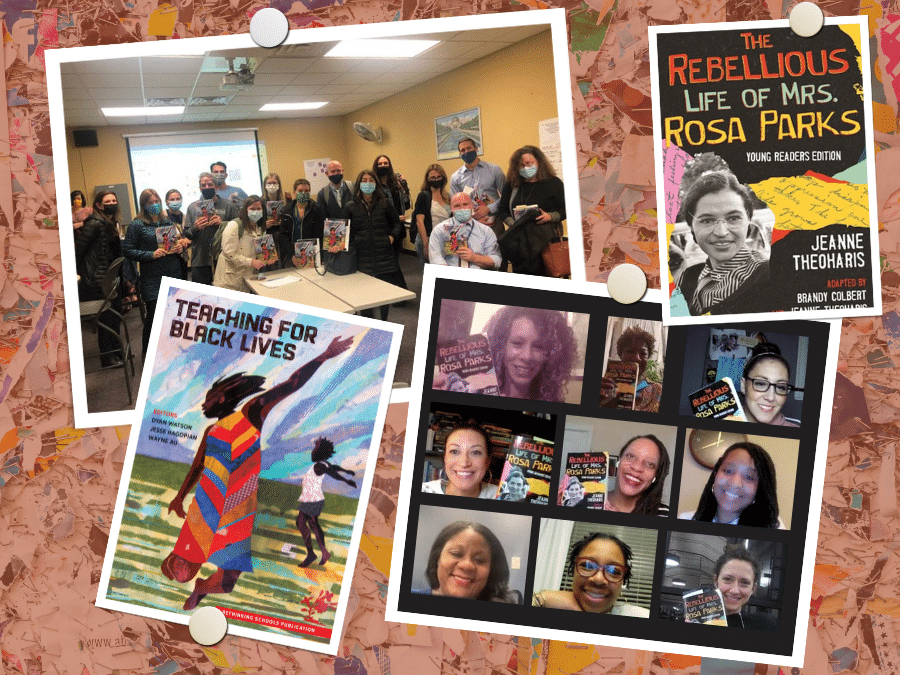 For Black History Month, we purchased additional copies of The Rebellious Life of Mrs. Rosa Parks for anyone to pick up for free. During lunch periods, students and staff had the option to attend a book discussion and screening of The Rebellious Life of Mrs. Rosa Parks, organized by the LT Reads Program and Student Equity and Belonging Committee respectively.
For Black History Month, we purchased additional copies of The Rebellious Life of Mrs. Rosa Parks for anyone to pick up for free. During lunch periods, students and staff had the option to attend a book discussion and screening of The Rebellious Life of Mrs. Rosa Parks, organized by the LT Reads Program and Student Equity and Belonging Committee respectively.
The book club event included a virtual visit with Brandy Colbert, the award-winning young adult author who adapted the young reader’s edition. Read the full story here. — Jennifer Rowe, Director of Equity and Belonging and Teaching for Black Lives study group coordinator
Indiana
Carmel
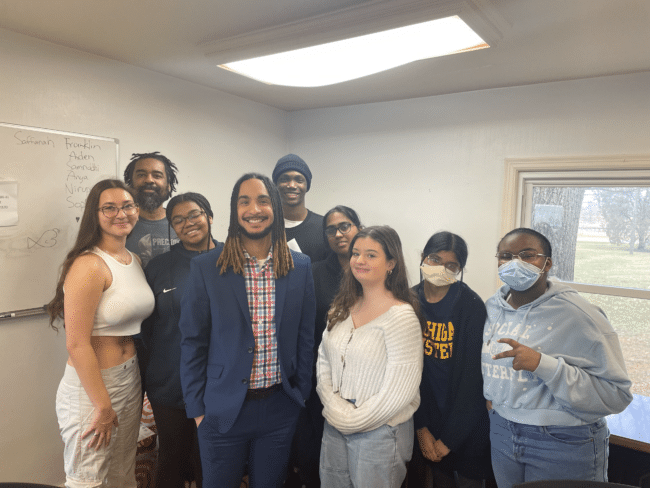
We watched the film and focused on ways Mrs. Parks evolved as an activist and thinker. Her changing roles and involvements became a touchstone for the rest of our course. — Franklin Oliver, High School Social Studies Teacher
Terre Haute
I used the book throughout the school year in small groups. Each group read the book during the first meeting of the week and then we held a book discussion in our next meeting. We discussed any feelings the book may have brought up while the students were reading as well as connected it to current events.
Through reading the book, I was able to create a safe place for my students to truly share their thoughts and feelings. So often we hear, “they aren’t old enough or mature enough” to hear true history, but through this experience I know that couldn’t be further from the truth.
My students felt empowered and energized from reading Rosa Parks’ story. I am grateful I had the opportunity to share it with them. — Destiny Wilson, Middle School Speech-Language Pathologist
Kansas
Atchison
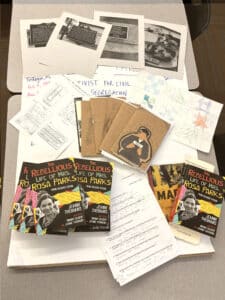
We read the book as a class (7th and 8th grade) and each student created a personal reflection notebook. Students responded very well to the book, especially the previously unheard details of her life in Detroit and her connections to the many Civil Rights activists she worked with over her 60 plus years as an activist. One of our culminating activities used Parks’ metaphor of a quilt for the movement. Students briefly studied quilt design and color symbolism and created a plan for a quilt that would symbolize the various events in the civil rights movement and Mrs. Parks’ life. — Lynette Wescott, Middle School Language Arts Teacher
Maryland
Silver Spring
In my school district, anything we show to students has to be evaluated and approved. I evaluated the film and a fellow media specialist provided the second signature as required. I not only shared it with the teachers at my school, but all the other twenty-five high school media specialists. I also shared the link with fellow educators here in the state of Maryland.
I included the film as a Student Service Learning experience. Students came in after school and watched, took notes, and discussed the film. We did this on two dates. The discussions were very rich. Now that it is National Library Month the students who participated have to do a final project of their choice to share with the school community during National Library Month.
I also did a presentation of this wonderful video for adults. I booked a room at my local library and invited friends, family, and the general public to attend. The event was well attended and once again the discussions were rich. I introduced the documentary, provided the background on Rosa Parks, Jeanne Theoharis, and Soledad O’Brien (it was Women’s History Month), provided capture sheets (so participants could capture their thoughts), and stopped the video so people could think about what they saw, and then they talked in small groups. The students needed more stops because there was so much they just did not know. — Laura Ellis, High School Librarian
Massachusetts
Fiskdale
My AP Language and Composition course is designed as a deep inquiry into the ways counter narratives are necessary to tell a more accurate story of our American identity. The Rebellious Life of Mrs. Rosa Parks was the perfect documentary to further explore this idea in our inquiry into the Civil Rights Movement.
We began the unit with I Am Not Your Negro and James Baldwin’s The Fire Next Time. We continued by reading first hand accounts and speeches from Fannie Lou Hamer, John Lewis, members of SNCC, Malcolm X, and Martin Luther King Jr. including the first half of his “I Have a Dream” speech which rarely gets studied in schools. We followed up our inquiry into Rosa Parks with a viewing and analysis of the documentary, 13th. We added important events from our study onto a historical timeline. Before the documentary I used Jesse Hagopian’s lesson: Rosa Parks: Countering the Master Narrative. — Susan Biggs, High School Language Arts Teacher
Westhampton
Prior to viewing the film, students had an open discussion on Mrs. Parks and the movement. They were familiar with the Bus Boycott from the Civil Rights Unit. As they began view, they used a viewing guide to jot notes and comments. As they viewed the documentary, many of them commented on how Mrs. Parks was treated by the men of the movement. After the viewing, there was dialogue that Mrs. Parks was not treated fairly and that her work after the boycott needs to be emphasized more. We discussed activism in other organizations. — Kelly Carpenter, High School Social Studies Teacher
Michigan
Kalamazoo
After introducing the RLMRP books and access to the film at a local aspiring educators of Michigan (student organization) meeting, we discussed some of what the students knew, or had mythologized about Mrs. Parks. Agreeing that we all knew too little, and assumed too much, the students took up the opportunity to host a video night for students on campus. In late March, after putting up posters and projecting commercials in the student center, participants told stories about how they learned of Rosa Parks growing up and questions they had before watching the movie. Afterwards, I gave away additional copies of the text, and everyone shared one major take away from the event.
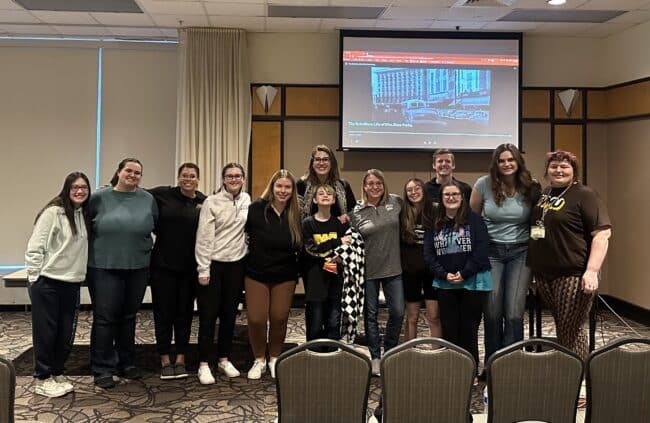
I created QR codes for each of the Rosa Parks mixer prompts in the beautiful lesson plan by Bill Bigelow so students could scan them- and linked Zinn’s site and all the Rosa plans to the pages! — Brianne Pitts, Teacher Educator
Novi
We offered the book as one of the choices for our social justice themed lit circles. The conversations illicited were powerful. I was particularly interested in how candidly many of the white students connected the injustices of the past highlighted in the book with current injustices. The way it brought students of all races together in a discussion was amazing. — Anonymous
Mississippi
Meridian
The students in my American Women class were tasked with helping to disrupt the narrative that most hear/know regarding Rosa Parks. The class read excerpts from The Rebellious Life of Mrs. Rosa Parks. We focused on chapter 9 while discussing the role the Highlander Folk School had on Rosa, chapter 10 and the death of Emmett Till, chapter 20 working with John Conyers, chapter 21 and her feelings toward Malcolm X, and chapter 25 and her work with the Black Panthers. Students were asked how these moments in Parks’ life impacted her and why they thought they were often overlooked when most study Rosa Parks.
We watched the film as a whole continuing with the objective and addressing how learning more about Parks’ life can tell us the whole story of this incredible woman. Students were then asked to create social media posts addressing an aspect of Parks’ life.
We also discussed the choice of the statue of Rosa Parks for the Capitol and students expressed their disappointment that she was depicted as sitting on the bus. One student shook their head as they said, “Rosa Parks was so much bigger than the Montgomery Bus Boycott.” — Vanessa Reed, High School Social Studies Teacher
Missouri
Belton
I used the film with my College American History students. We weren’t quite to the Civil Rights Movement in our content, but students had prior knowledge from past history courses. We used the lesson plan where we created our own timeline of events for Mrs. Parks life events that were influential to her development and growth. It was eye-opening to see what the students noted as important compared to the online timeline we examined prior to the film. As students watched the film, they took note of key events to include in our timeline. It was interesting to see the overlap between students’ ideas. After the film students shared what they thought was important and created whole class timeline. — Angela Lea, High School Social Studies Teacher
Smithfield
We started each class period in February with a Black History Month spotlight, which included a spotlight of Claudette Colvin, referencing excerpts from the book. Students then created a Black History Month project where many students researched Rosa Parks and Claudette Colvin. — Bret Marshall, Social Studies Teacher
St. Louis
I used the books in an ELA/SS combined lesson on Rosa Parks for the month of February. Students in 7th grade got to learn about various civil rights icons and learn hidden history about famous leaders like Parks and King, and learn about lesser studied figures like Bayard Rustin or Malcolm X. Students selected a book to read in ELA for lit circles and this was one of the books middle school students could select. Students liked learning the hidden history of famous people. It was a great lesson. My co-teacher and I lead a district-wide PD on using this book in ELA classes and American history classes. — Linnet Husi, Middle School Teacher
Nevada
Las Vegas
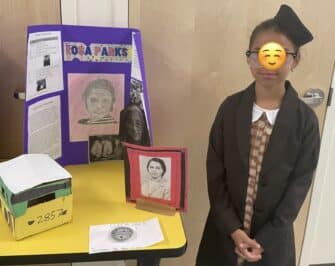 A student read the Rosa Parks book for her biography research project during our summer session.
A student read the Rosa Parks book for her biography research project during our summer session.
She was so inspired by Parks’s activism outside of the bus boycott that she selected Parks as someone to portray in our Living Wax Museum on June 17th. — Teynae Richardson, Upper Elementary Social Studies Teacher
New Mexico
Albuquerque
This quarter, I began our women’s studies unit with The Rebellious Life of Mrs. Rosa Parks. I used the timeline analysis of Rosa Parks’ life. Students completed the activity before we began the film. Students then added to it after watching the film.
This lesson was presented as we were wrapping up our study of monuments and memorials. I posed a question to students about creating a monument to Rosa Parks, which read: After watching the beginning of the documentary, reflect on how you might make a monument or memorial that commemorates the life of Rosa Parks. What parts of her story might you represent and how? Some of the responses were:
Her standing with the NAACP sign and a bus behind her along with her husband. Her joining and sticking with the NAACP. The sign represents that part of her life. The bus represents the bus boycott. And her husband behind her is the introduction to the NAACP and the fact they made a foundation with each other.
What I will do is create a statue of her. There are statues of her already, but I want to put the words that represent her on the statue to show who she was and that she fought for equality. The parts I might represent are where she stands up and fights for equality, and I stand and fight also if something is wrong.
— Mercedes Avila, High School Social Studies Teacher
New York
Flushing
Since I had five copies of the book, I assigned it for extra credit to five students. I posted the following questions to them. What connections can you make between the book and your life, current events, and what you are learning about in social studies? How did ordinary citizens like Rosa Parks challenge segregation, as well as the ongoing pursuit of freedom? The students were asked to respond to these questions in an essay form using text evidence from the book. — Eva Kostakis, Middle School Social Studies Teacher
New York
We used this book, in addition to other books on Rosa Parks, as part of our expansive, multi-year learning on the Civil Rights Movement. This book made the journey with me and my daughters on a homeschool trip to Georgia and Alabama, where we did a week-long civil rights learning experience. We traveled around on our own, visiting various national historic sites and museums to experience the Civil Rights Movement, past and present, in in-depth ways. We visited the Rosa Parks Museum and my 10-year-old daughter had so much knowledge to integrate based on her reading of this book. — Bari Katz, Homeschool educator
North Carolina
Raleigh
We used the text in my literacy methods course for elementary teachers. We read the book as I modeled how to run a book club. Teacher candidates prepared for discussions. We used the “Last Word” text based protocol to select passages to share with small groups and we discussed the “history” we had been taught and the history that prevails in schools. Many teacher candidates felt cheated by the history they had been taught. We reviewed other books and texts about Rosa Parks for accuracy and thoroughness. — Jennifer Olson, Teacher Educator
Ohio
Athens
I used the book in my EDMC 3500 Teaching Social Studies in the Middle Grade [which in Ohio currently is grades 4–9.] I created six groups and held each responsible for presenting several chapters focusing on the main events and civil rights leaders. It was useful text to use in the course which hopefully inspired these teacher candidates to teach about Civil Rights Movement once they have their own classroom. — Frans Doppen, Ohio University Teacher Educator
Oklahoma
Tulsa
We put all of the books on our bookmobile that gives free books to the Tulsa community! — School Librarian
Oregon
Aumsville
The book was used to extend lessons about the Civil Rights Movement and to help students rethink what they knew about Rosa. The book showed a different side of the movement, from a women’s perspective instead of from the men we usually hear about. I used it to show that there were inequalities in the movement as well. — Tianna Clark, High School Social Studies Teacher
Beaverton
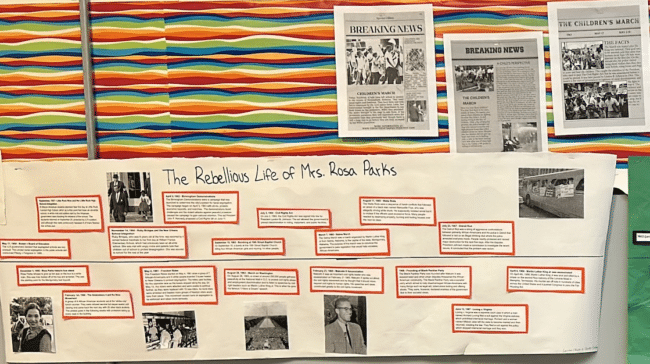
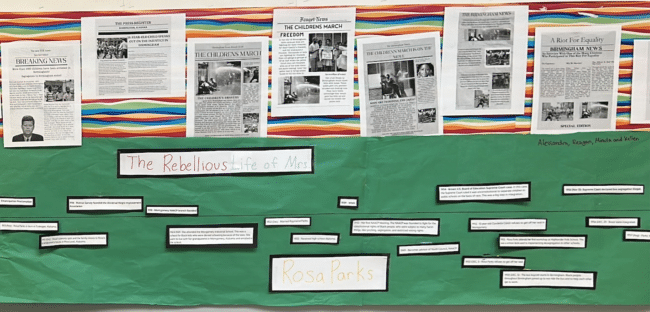
My 8th grade students read the young readers’ edition of The Rebellious Life of Mrs. Rosa Parks in our social justice reading unit. They read independently and worked on the timeline and a “Book Creator” assignment together. The timelines are posted in the hallways (see above) and pictures were included in the school newspaper. I enjoyed watching how engaged students were with reading and discussing the book. They thought they knew so much about Rosa Parks before they began reading. I was inspired by their discussions. — Kelley McKay, Whitford Middle School Humanities Teacher
I created book clubs around social justice figures including Rosa Parks, Melba Patillo Beals (Warriors Don’t Cry), and Bryan Stevenson (Just Mercy). Students were highly engaged in discussions of all three figures, and many students read more than one title from the book club collection. Students used their thinking about the texts to create reflection projects to capture and share their learning. The student projects have been posted in the classroom and around the school halls. Photos of some student work have been shared in our community newsletter. — Teacher Educator
Lake Oswego
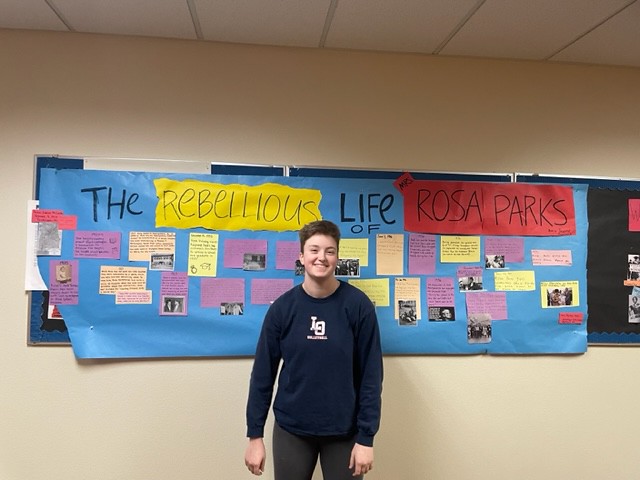
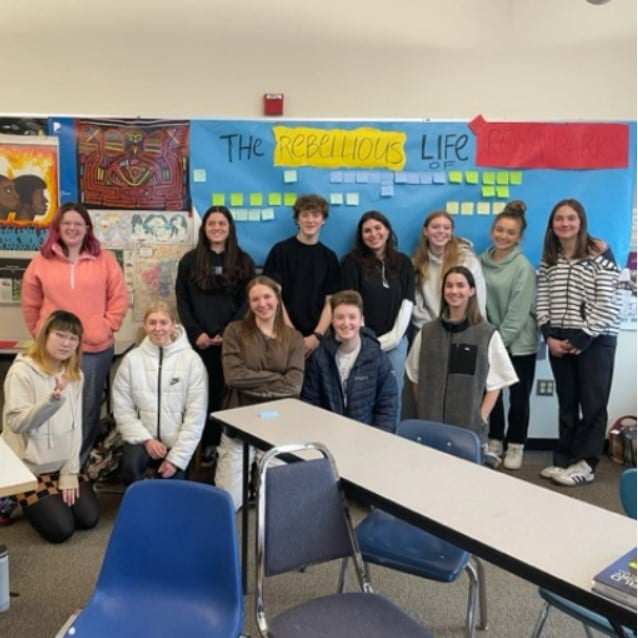
My high school Women’s Studies class students were each given The Rebellious Life of Mrs. Rosa Parks: Young Readers Edition to read in class and at home over two weeks.
Then we followed the lesson by Ursula Wolfe-Rocca that is called “Rosa Parks Lived a Long and Active Life, So Why Is This Timeline So Boring and Short?”
To share what we learned with the rest of the school, we created our own timeline to hang in the social studies hallway for Black History Month and Women’s History Month.
The students and I were struck and moved by Mrs. Park’s lifetime commitment to the social and racial justice movement, which began long before the act of civil disobedience for which she is mostly known. This has sparked curiosity to dig deeper into other stories in history that we only know at the surface level.
The young adult biography format was easy to digest for students and could be assigned as a complete novel to a class or chapters jigsawed for individual students to share back to the whole group.
Portland
We watched the video as part of a project and trying to have a better understanding of a whole person, and not just knowing one fact about them, that they are famous for. We focused on digger deeper. To understand the difficulty, inequity and injustice of the time and was the driver behind the action. Each student made a quilt square with a famous black historical people. One part was dedicated to their “highlights,” but the rest was information about the person too.— Jessica Lingenfelter, Elementary Language Arts Teacher
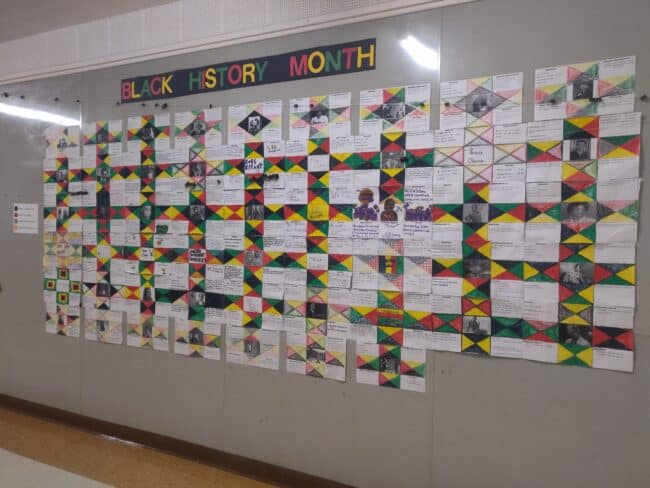
Pennsylvania
Pittsburgh
Teen Screen offered this film to teachers on our mailing list during the months of February and March. Teen Screen is a long-established and well-respected resource for teachers in Pennsylvania and beyond. The film was requested by teachers at two middle and five high schools in the greater Pittsburgh area and two high schools in West Virginia. There were 1157 viewers reported. — Lori Sisson, Film Pittsburgh-Teen Screen program director
South Carolina
Fort Mill
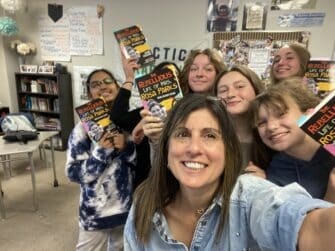
I read the book during homeroom DEAR (Drop Everything and Read) time and had a small group of students in a lunchtime book club. We broke the book into three sections and met to discuss it over the course of three weeks.
We had some really meaningful discussions and the students learned the strength and conviction of the rebellious Mrs. Parks. — Anna O’Brien, Middle School Social Studies Teacher
Tennessee
Lebanon
My Cumberland University students and I listed what we knew about Rosa Parks and realized it was not very much. Then we analyzed textbooks from the 1960s to the present to understand that her story hasn’t changed very much in the way it has been depicted.
Then we analyzed several primary documents surrounding the Montgomery Bus Boycott to add to our understanding. Myles Horton is a graduate of our university so that is an additional connection for my students to make with Highlander Folk School!
This class activity was augmented by a campus screening of The Rebellious Life of Mrs. Rosa Parks sponsored by our history program and The Art of Life who provided snacks and door prizes, which were copies of the book! — Tara Mielnik, University Social Studies Professor
Nashville
Last week, EdCo brought teachers from schools all over the city together to watch The Rebellious Life of Mrs. Rosa Parks – a powerful film that recharged our commitment to working for equality & justice for all our students. Thanks to @ZinnEdProject for the support & @coopgallery pic.twitter.com/1bKvxHsZKH
— EducatorsCooperative (@Ed_Cooperative) March 30, 2023
More than a dozen teachers from area public, private, and charter schools gathered in March for a screening of The Rebellious Life of Mrs. Rosa Parks, hosted by the Educators Cooperative. The event organizer shared, “Educators discussed the way the film illuminated a more complete story than the one we’ve often been told about Rosa Parks, and what that means for the stories we tell and share in our classrooms. Many agreed that it made sense that the true nature of her revolutionary vision and persistence had been hidden from popular view and it led to a great conversation about how we might learn and teach more complete stories. Thanks to the generous support of the Zinn Education Project, a class set of the YA edition of the biography was made available for teachers to use in their classrooms in reading circles, book clubs, or study groups.”
Texas
Austin
I was invited to give a presentation to Teachers of Tomorrow at UT Austin to speak about dominant narratives in elementary social studies. I used the Rosa Parks story and Jeanne Theoharis’ scholarship as a foundation to illustrate how master narratives distort the truth and uphold white supremacy. The presentation was called, Heroes, Activism, & Dominant Narratives: Teaching for Justice in Elementary Social Studies.
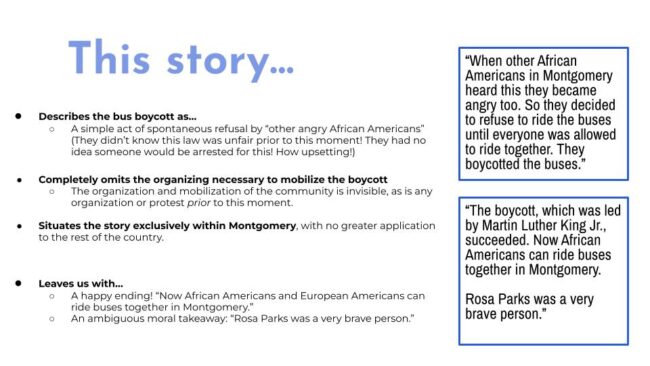 Participants, mostly undergraduate education students, an opportunity to interact with a more complex narrative of Rosa Parks than they had previously been taught. At the end of the presentation, participants were each given a copy of the book and links to resources from Rethinking Schools and the Zinn Education Project, and I challenged participants to rewrite the typical textbook narrative by drawing from Theoharis’ scholarship. — Erin Green, Teacher Educator
Participants, mostly undergraduate education students, an opportunity to interact with a more complex narrative of Rosa Parks than they had previously been taught. At the end of the presentation, participants were each given a copy of the book and links to resources from Rethinking Schools and the Zinn Education Project, and I challenged participants to rewrite the typical textbook narrative by drawing from Theoharis’ scholarship. — Erin Green, Teacher Educator
Houston
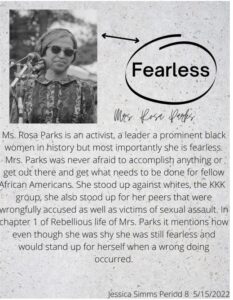 The Rebellious Life of Mrs. Rosa Parks was a core text for our study of the Civil Rights Movement. Each student was assigned a chapter to read and summarize on a shared discussion board. By reading the chapter summaries, many students became inspired to read the entire book for themselves.
The Rebellious Life of Mrs. Rosa Parks was a core text for our study of the Civil Rights Movement. Each student was assigned a chapter to read and summarize on a shared discussion board. By reading the chapter summaries, many students became inspired to read the entire book for themselves.
Then they made posters with one word to describe Mrs. Parks and why those chose it. Many said they saw themselves in the various stages of Parks’ life. Their posters were displayed in the hall for all the students in the school to read. — Nelva Williamson, Middle and High School Social Studies Teacher
San Antonio
#TheRebelliousRosaParks books were sent to me from the @ZinnEdProject to help teach my Upward Bound students at @StMarysU about #BHM, social justice, and #Reparations for the Black Americandescendants of slaves and U.S. Freedmen. #CoalitionBuilding pic.twitter.com/YfWuHccjWd
— Dr Lisa Brown, Likes or retweets aren’t approvals (@DrRetweets) January 27, 2024
Virginia
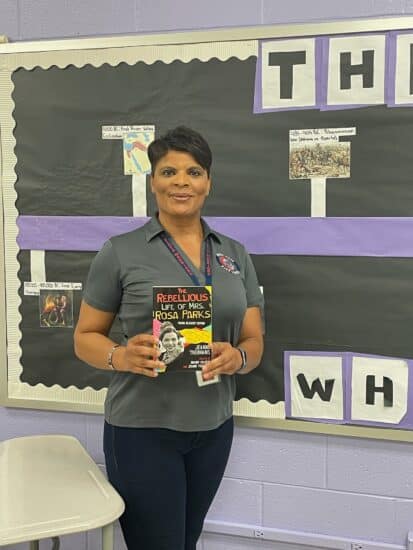
The books were given to teachers and students in our African American History course. The teachers used excerpts from the book in lessons taught across the course and made available for students to check out and read at their own leisure. Students were highly interested in Mrs. Rosa Park’s life and several took advantage of reading the entire book. — Anonymous
Alexandria
Students read the book and had a discussion camp where they shared ideas on how Rosa Parks was rebellious and how people in their community were during segregation. Students interviewed those in their community who lived during Rosa Park’s time and created their own documentary called “Rebellious Lives.” — La Gina Gross, High School Librarian
Richmond
I used the lesson materials from The Rebellious Life of Mrs. Rosa Parks. Some of the roles were posted around the room, and students worked in pairs to read each role and complete the mixer questions. Then we watched the documentary for the rest of the class period and the following class period.— Katharine Wilson, Middle School Social Studies Teacher
Vienna
My African American History students watched the film as part of our unit on the Civil Rights movement. We discussed the early attempts by the NAACP to challenge segregation through the legal system and the effects of WWII on early civil rights activism, then discussed the idea of the Master Narrative (from Professor Hasan Jeffries) before watching the film in three 30-minute segments.
After each segment we discussed what we had seen and how it challenged the Master Narrative, as well as looking at some documents that related to what we had seen, such as instructions for the Montgomery Bus Boycott, Dr. King’s Letter from a Birmingham Jail, a newspaper article about the Detroit Riots, and Ballot or the Bullet by Malcolm X.
Students were amazed at how what they had learned in their U.S. history class (most students are seniors and took that junior year) was limited to the Master Narrative. The Parks’ documentary challenged that. They appreciated the depth of the film and the new perspective they gained of the Civil Rights Movement. At the very end, I had students write a 30-second “elevator speech” to challenge the Master Narrative using something that they had seen in the film. — Christina Palo, High School History Teacher
Waynesboro
I designed a 5-week unit called “The Story of Rosa Parks and the Fight for U.S. Civil Rights” around the book for my three English 11 classes (60 students total). Every day, students read 1 or 2 chapters, then added 3 entries to their notes sheet. For each notes entry, students wrote a quotation from the book, then recorded their observations, connections, or questions about the passage. I also gave a mini-lesson at the beginning of each class focusing on a person or event mentioned in the previous day’s chapters.
At the end of the unit, students wrote an essay using the book and online sources to bust myths about Parks’ life and explain the historical truths about her life and activism. The deep dive was meaningful and changed students’ understanding of Parks, with one student writing that before this unit, “I just thought of her as someone in the history lessons, but now I see her as an actual person as I learn more about her life and connect her to reality.” Another wrote, “Learning about how much of an integral part she was to the movement has drastically changed my opinion about her.”
Most students responded positively to the book, with one person saying that, “I really enjoyed this book; I believe it displayed information really well, along with the way that there are pictures of primary sources within the book as well.” Out of 44 students, the book received an average rating of 7 out of 10, with 66% rating it a 7 or above.
They wanted more people to know Parks’ real history of activism and her true motivations, stating that “everyone deserves to be remembered the correct way.” Moreover, the teenagers wanted to see this happen in younger grades: “I would like children to be taught or learn the proper way/story of Rosa Parks. A simple fact could do a lot for a child and I know for me that would’ve changed my perspective about what I learned, especially the about the Civil Rights Movement; it’s not shown or taught appropriately and I believe it should be.” Thanks Zinn Ed Project and Dr. Jeanne Theoharis for an incredible learning opportunity! — Lorraine Dresch, High School Language Arts Teacher Note the school also hosted a film screening for Black History Month.
Washington
Mukilteo
In the Ethnic Studies course I facilitate, we watched The Rebellious Life of Mrs. Rosa Parks as a way to explore below the line narratives of critical moments and crucial people from the past. We examined the film to see how actions of individual folks become part of larger movements. We continue to analyze how the past is present, how to think critically in ways to challenge systems — not to merely point fingers at individuals or groups, but rather explore the systems that keep injustice alive.
Student members of the Unity-Equity-Community Club referred to the film during a presentation they provided to school district level directors, offering their critiques of the current curriculum utilized by secondary social studies. Students advocated for more inclusive and complete stories such as this about Rosa Parks. They also demanded that more stories of women of color be included in the next curriculum adoption. — Doug Baer, High School Social Studies Teacher
Wisconsin
Milwaukee
We hosted a book club in July 2023 with members of the community and our own Junior Griots — high school students who we trained as docents as part of a summer internship. — Adamali De La Cruz, America’s Black Holocaust Museum
International
South Africa
This morning the Luthuli Museum team were at Nonhlevu Secondary School for Black History Month-screening the film: Rebellious life of Rosa Parks documentary. #luthulimuseum #luthulilegacy pic.twitter.com/yxSCOpOIvz
— Luthuli Museum (@LuthuliMuseum) March 5, 2024
The Luthuli Museum Educational Department were at Groutville High School earlier as part of Black History Month Documentary screening.
The Students are being treated to the screening of the documentary: Rebellious life of Rosa Parks. #Luthulimuseum #luthuli #blackhistorymonth pic.twitter.com/AAt9XDCR3o— Luthuli Museum (@LuthuliMuseum) February 29, 2024
Anonymous
The stories below were shared by educators who asked not to have their city or state identified. It is a sad sign of the times that teachers are vulnerable to attack for their good work.
We used the book in our U.S. history course during our civil rights movement [lesson]. It was part of the lesson on myths of the Civil Rights Movement. Students write what they’ve previously learned about Rosa Parks (usually something superficial) and then they have to read the book and complete other research and write about how we could teach activist history in a more comprehensive way. They compile organizing strategies of the Montgomery bus boycott and argue why the myth of Rosa Parks being a simple seamstress who was simply tired misses the point of how change actually occurred. — Anonymous
My students and I were in class during Spring Break and we used that time to watch and analyze the video. My students are all middle schoolers and although we have studied her extensively, the video gave them a much greater understanding that racism does exist much more broadly across the United States. — Anonymous
I read excerpts from the book during our 4th grade unit on the Civil Rights Movement. As our school (and myself) are a “target” for teaching outside of the comfortable, white-washed curriculum, I couldn’t use the book as much as I would have liked. In addition to the excerpts in class, if students wanted to read the book they were allowed to borrow a copy (with written permission form their adult guardian). Only 2 of 21 students chose to do this (which didn’t surprise me). — Anonymous
I have organized a cross-class book study among 11th grade students who have engaged in weekly book club meetings to discuss chapters! This has been an incredible experience for students! Today we discussed chapters 17-20 outside on a beautiful day! Students examined the complexities of this history and the role of intersectionality in our history. This book has been a fantastic conversation starter and allows an in-depth look at the life of Rosa Parks, while providing significant historical context! One student left the book talk and said, “This is the best book I’ve read in a while!” — Anonymous
I provided excerpts from the book in a jigsaw activity for students to learn about Rosa Parks’ upbringing and her accomplishments. — Anonymous
During our American Activists Unit, students had the option to select between four books that highlight activist leaders in our communities. The Rebellious Life of Mrs. Rosa Parks was a beautiful addition to this literature circle-style teaching. Students looked at the background, motivation, reprimands, internal and external conflicts, and results of Mrs. Rosa Parks. In addition, students looked at a variety of psychological studies to understand bystander effect and how that might play into action or inaction. — Anonymous
Students must read a book about “walking in someone else’s shoes.” We discuss the issues of under-represented views and stories all year long. It culminates with a unit on major reformers throughout history and how they changed things. Here is what a few students said about the Rosa Parks books:
Victoria: “I read The Rebellious Life of Mrs. Rosa Parks, and I enjoyed it. I learned a lot of things I didn’t know about her because I used to think of her as the person who gave up her seat on the bus.”
Abby: “It was very informative. It has a great title — very fitting.”
Nico: “I was impressed by how much adversity Rosa Parks overcame. I never knew how much she persevered and she is only remembered for not giving up her seat on the bus!”
— Anonymous
These stories make evident that countless teachers, often at personal and professional risk, refuse to censor their lessons. Not only are they teaching about racism and resistance in history, they are applying those lessons in their fight for the right to teach honestly today.
The book distribution is made possible by donations from Lush Cosmetics in support of teaching truth in history, Beacon Press, Soledad O’Brien Productions with funding from The Ford Foundation, and many individual donors. Add your donation.
The documentary about Rosa Parks is streaming on Peacock. The Zinn Education Project (a collaboration of Rethinking Schools and Teaching for Change) is hosting the book giveaway, classroom lessons, and teacher access for the film.

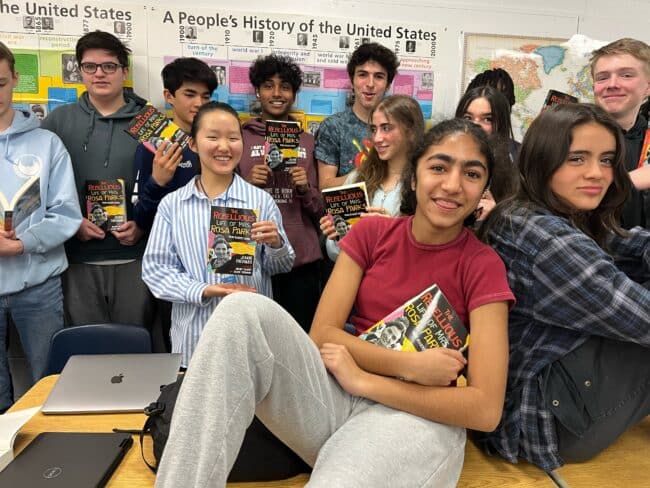
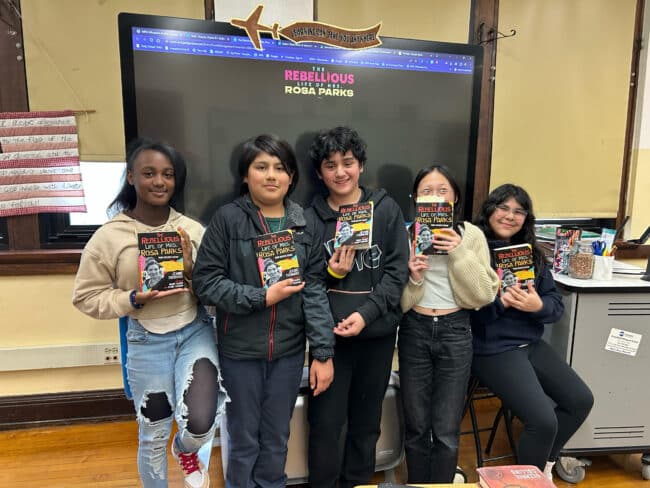
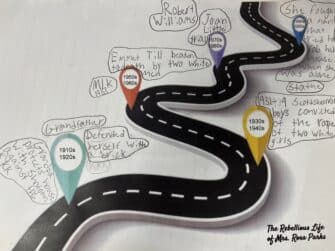
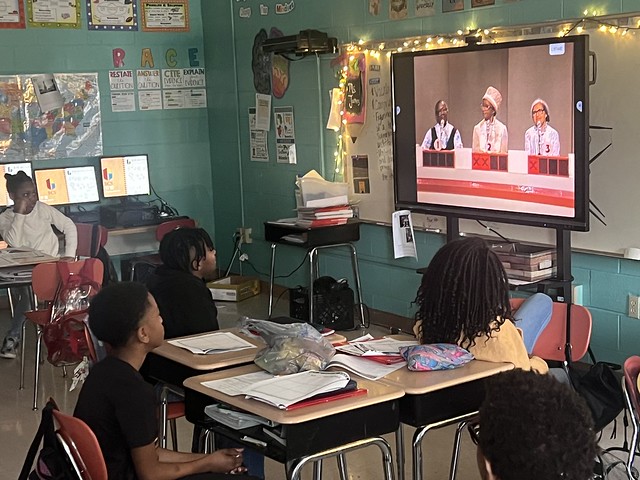
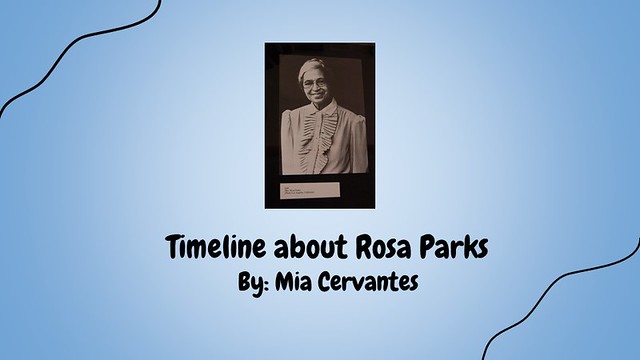
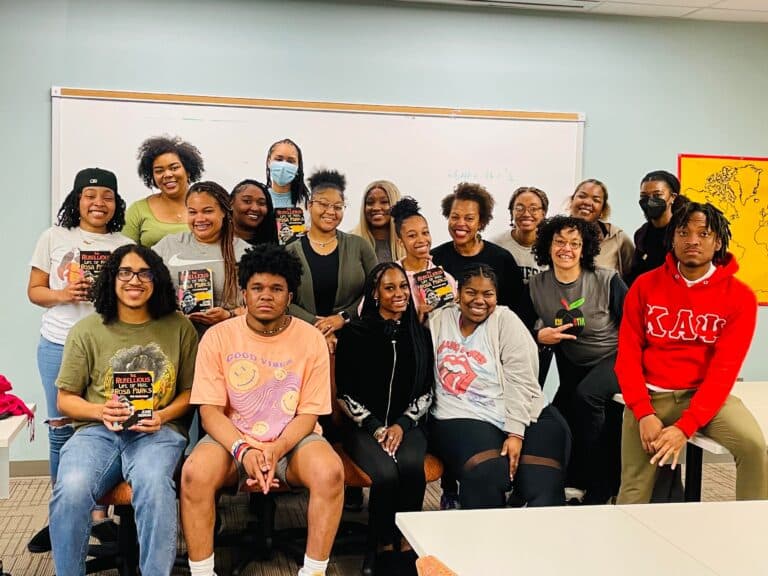
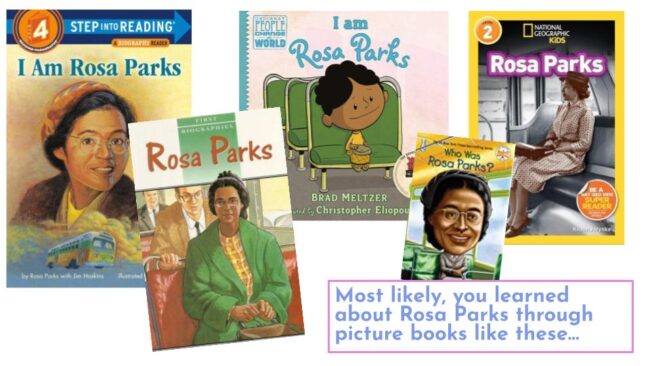
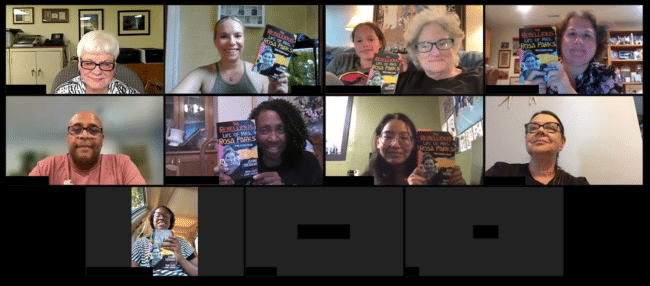
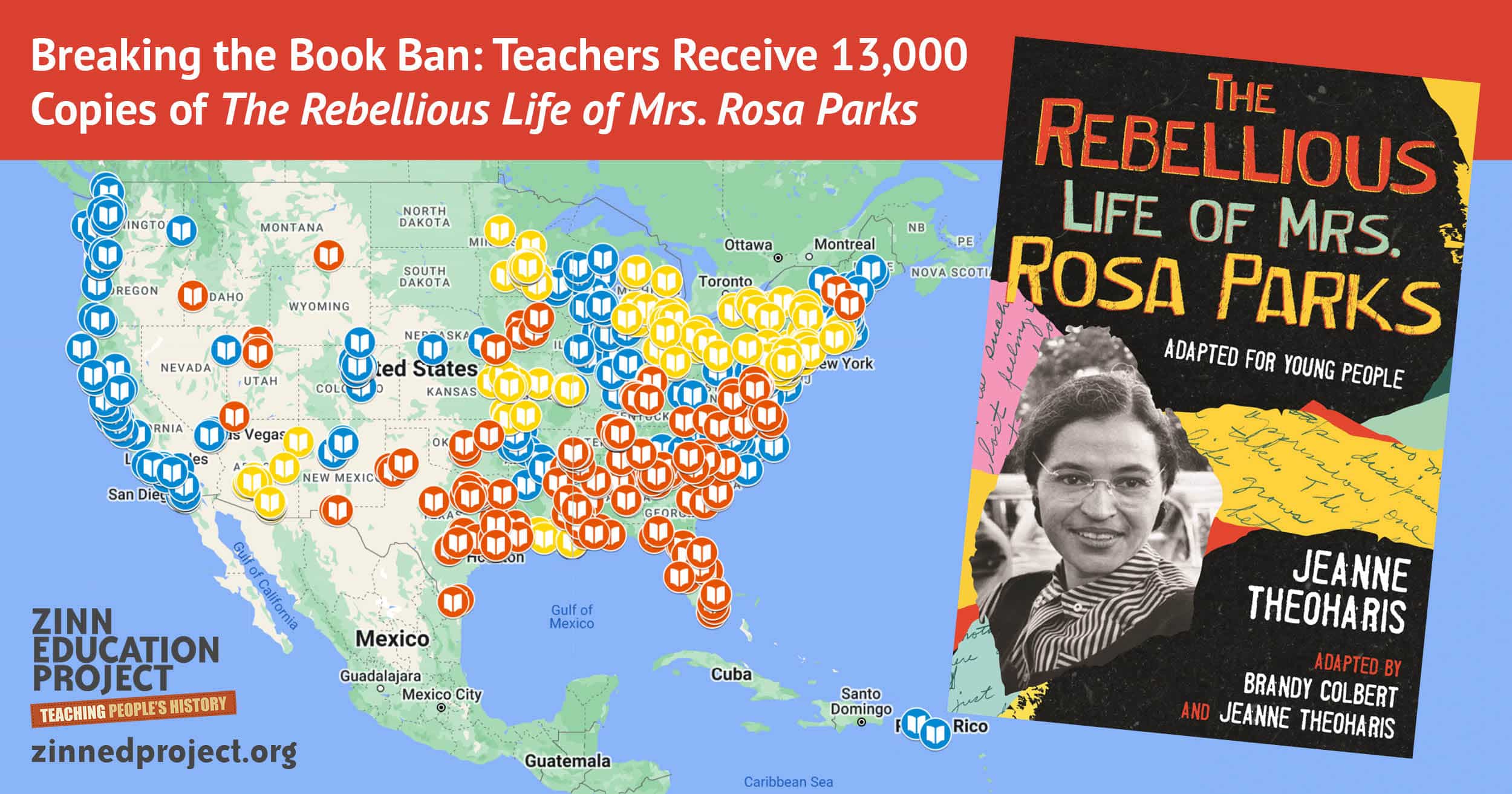
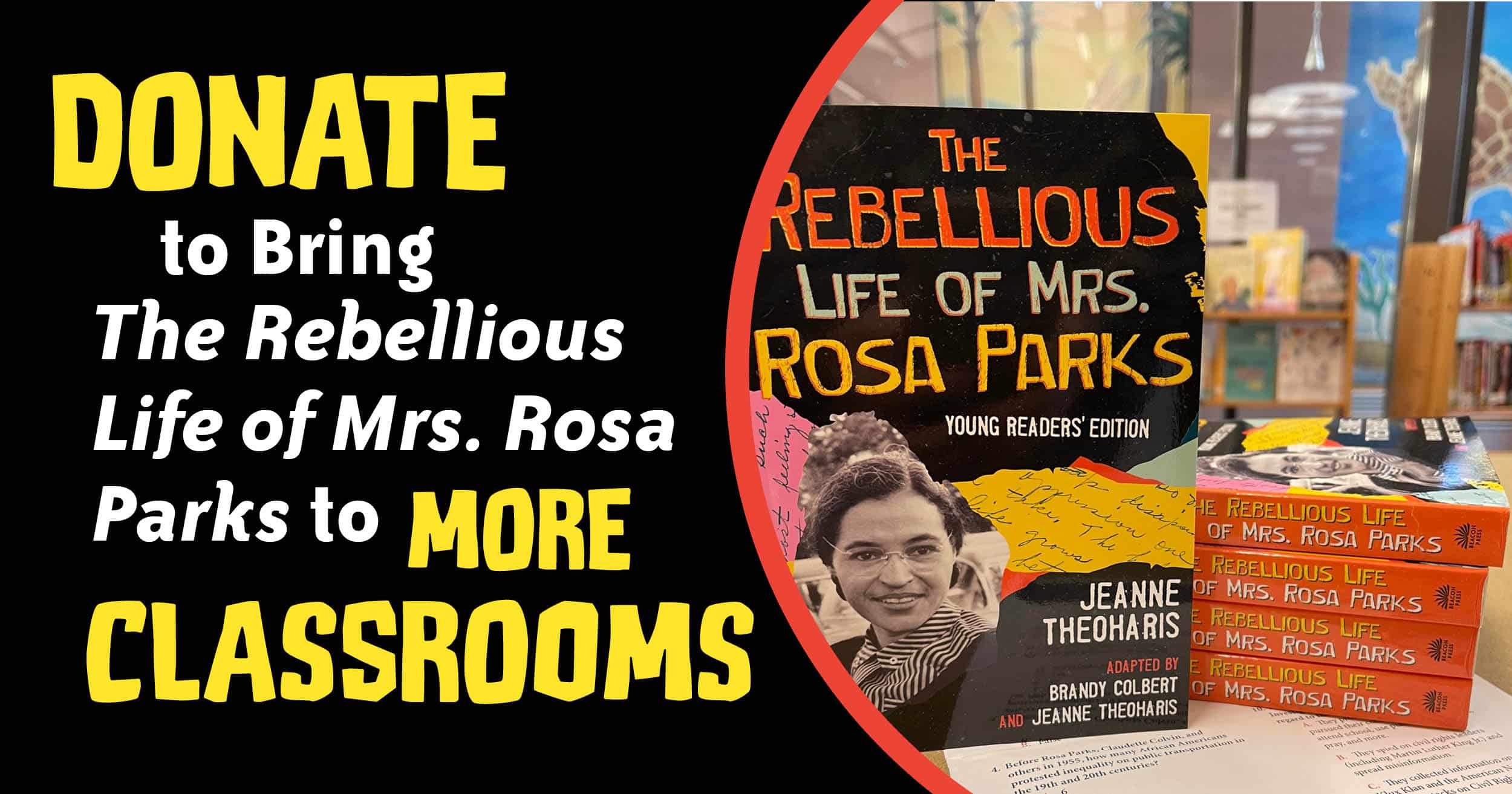
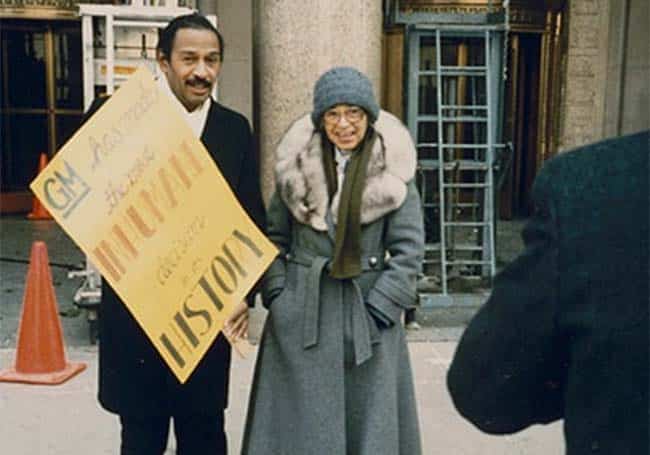
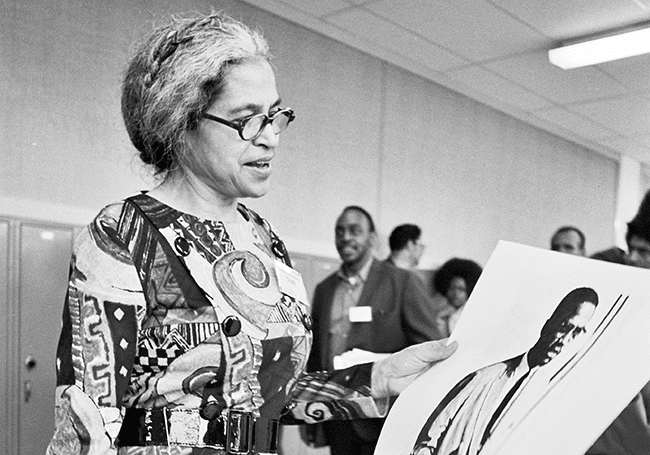
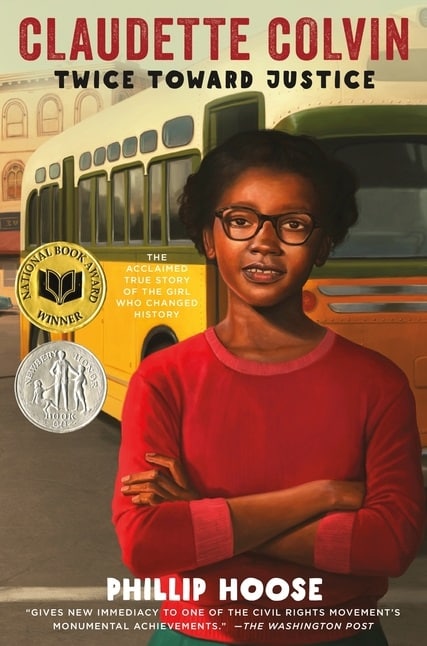
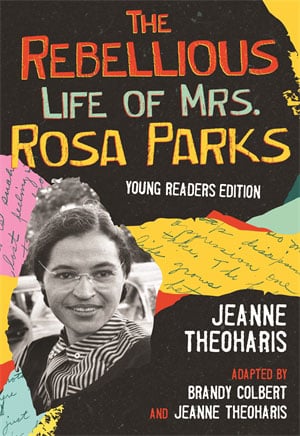







Twitter
Google plus
LinkedIn